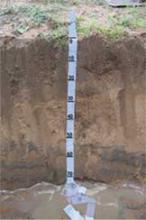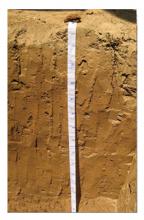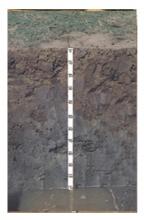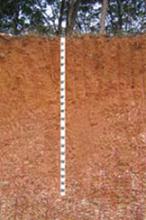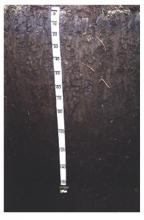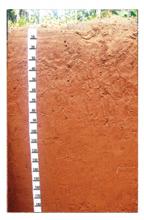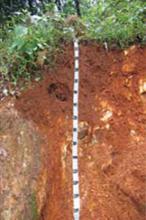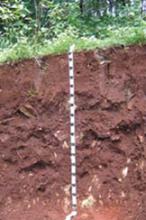Kari soils are seen in Alappuzha & Kottayam districts in marshy areas lying below Mean Sea Level. Kari soils have poor drainage, high acidity, salinity and decomposed organic matter at lower layers. The high amount of decomposed organic matter and wood debris in the subsoil and intrusion of sea water into the area are the main source of extreme acid conditions. The soil texture ranges from sandy clay to clay with intermediate textures of silty clay loam and clay loam. Sand pockets are frequented in the solum.
Soil Limitations - Impeded drainage,Toxic concentration of soluble salts, Extreme Acidity(pH<4), Presence of toxic compounds and elements, Low fertility
Management Measures - Limiting the generation of acidity by avoiding disturbance of the subsoil ,Pre flooding to allow reduction of acidity possible before planting the crop, Double cropping of rice (or even shrimps as in our traditional Pokkali lands) which shortens the period of soil drying, Frequent flushing of the surface with good quality water and practicing Intensive shallow drainage, either by broad, shallow ditches between broad raised beds where flooding with good water will help in leaching of acidity and salts without deep drainage
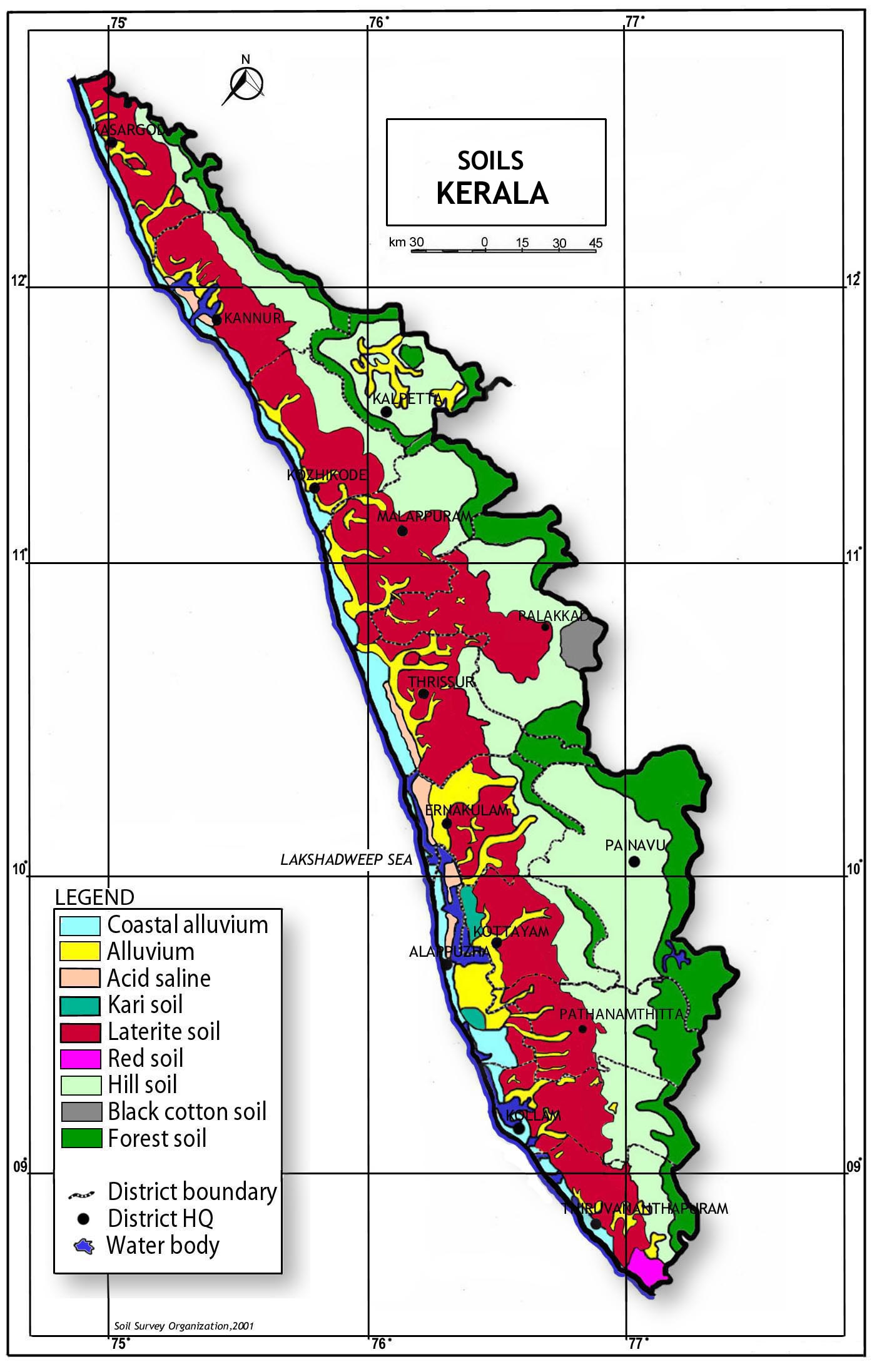 The topo-lithosequence of Kerala along with variation in rainfall, temperature and alternate wet and dry conditions particularly from the western coast to high ranges in the east and swift flowing rivers lead to the development of different types of natural vegetation and soil. The soils of Kerala can be broadly grouped into coastal alluvium, mixed alluvium, acid saline, kari, laterite, red, hill, black cotton and forest soils.
The topo-lithosequence of Kerala along with variation in rainfall, temperature and alternate wet and dry conditions particularly from the western coast to high ranges in the east and swift flowing rivers lead to the development of different types of natural vegetation and soil. The soils of Kerala can be broadly grouped into coastal alluvium, mixed alluvium, acid saline, kari, laterite, red, hill, black cotton and forest soils.
